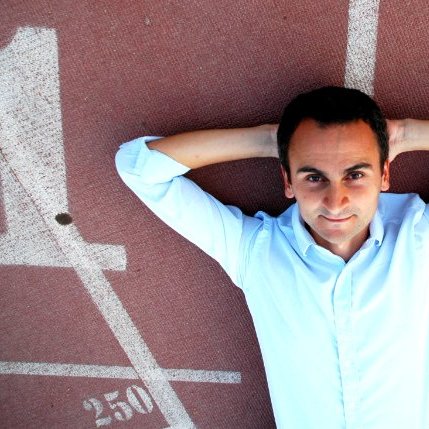This month, we were fortunate enough to chat with Mounir Zok, Director of Technology and Innovation at the US Olympic Committee. Mounir talked to LebNet about his unique career path that brought him success and the future of wearable technology for high performance sports. Feel free to connect with him on LinkedIn!
LebNet: Tell us a little about your early years and how you found yourself in sports technology.
Mounir: I was born in Beirut and raised there in the 70’s. I left in 1998 with a degree in Physics and then moved to Europe to further my education and start my career in Biomedical Engineering. I was inspired by the concept of applying Engineering principles to the human body and that is where I learned how to conduct research studies in the field.
I then started two companies in Rome, inspired by the research studies I had conducted- that is how I got into Sports Technology. We worked with world class athletes such as Cristiano Ronaldo and the prestigious Italian Skiing team to provide first of its kind, standalone configurable wearable technology for athletes. I would describe wearable sports technology as part hardware, part software and part analytics with the main aim to provide key stakeholders with data to make strategic decisions. The data provides valuable insight and data about athletic performance to coaches and trainers to make decisions about training techniques and strategy tactics.
LebNet: After establishing two successful companies in Rome, what compelled you to move to the US and join the US Olympic Committee?
Mounir: In 2012, I was contacted directly by the US Olympic Committee. They were looking for someone that had a combination of the relevant technical and business skills and able to develop something from scratch. I was also able to collaborate easily with the engineers. They needed help understanding how to leverage technology to help their athletes achieve that slight competitive edge that wins medals. I was so excited to be a part of the projects they were working on that I made the decision to exit my companies and move my family over to their offices in Colorado Springs.
LebNet: Can you give us one example from the Rio Olympics where technology played a key role in winning a medal?
Mounir: Ashton Eaton, USA Gold Medalist in the Decathlon, was using a cooling cap that was developed with the collaboration of Nike. The purpose of the cap/helmet is to bring down his body temperature in between sports to better prepare him for sport that followed.
LebNet: How do you see the future for sports wearables?
Mounir: My team focuses both on wearable technology and the evolution of wearable technology. We look closely at smart fabrics and textiles. Wearable tech will no longer be a physical accessory but it will be embedded in our every day clothing.
Lebnet: What are the ways to get into sports technology for an aspiring young person?
Mounir: I would recommend studying either Computer Engineering or Biomedical Engineering and finding a way to get involved in a sports team in any way possible. The best insights always come from the athletes themselves.
LebNet: Do you think this cutting edge technology has a chance of reaching Lebanese athletes?
Mounir: I strongly believe this technology could be in the hands of Lebanese athletes. Through education about high performance sports, we can establish a solid foundation for this type of technology.
